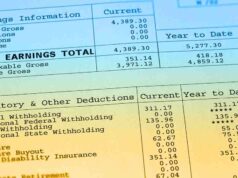
Embarking on online trading is an exciting endeavor with the promise of financial independence.
However, this journey has its challenges and risks. For beginners, understanding how to navigate the intricate landscape of online trading is crucial for long-term success.
In this extensive guide, we will explore in-depth strategies and practices, incorporating relatable examples to not only reduce risks but also empower novice traders to approach online trading with confidence and resilience.
1. Understanding Financial Markets:
Foundations of Financial Markets:
Before diving into the mechanics of online trading, it’s crucial to establish a strong foundation in financial markets. Imagine financial markets as vast ecosystems where each asset class—stocks, bonds, commodities, and currencies—represents a unique species.
To navigate this ecosystem effectively, beginners must understand the roles and behaviors of each species.
Reading Financial Charts

Proficiency in reading financial charts is a skill that will serve you well. Consider financial charts as maps guiding you through the market wilderness.
Much like learning to read a map, understanding charts helps you identify trends, potential entry and exit points, and the overall terrain of the market.
2. Research and Analysis
Fundamental Analysis
For beginners, grasping the fundamentals of fundamental analysis is essential. This involves evaluating a company’s financial health, examining economic indicators, and understanding the impact of news events on the financial markets.
Think of fundamental analysis as investigating a property before making a real estate investment. Just as a thorough inspection is crucial for a sound investment, understanding a company’s financial health is vital for informed trading decisions.
Technical Analysis Tools:
Explore technical analysis tools that help predict price movements based on historical data. Standard tools include moving averages, RSI (Relative Strength Index), and MACD (Moving Average Convergence Divergence).
Consider these tools as instruments in a trader’s toolkit. Like a carpenter uses different tools for specific purposes, traders use these indicators to navigate and make strategic decisions.
3. Risk Assessment and Tolerance
Defining Risk Tolerance
One of the critical aspects of risk management is understanding your risk tolerance. Assess your financial situation and determine the amount of risk you are comfortable taking on—picture risk tolerance as setting sail on a journey.
Before embarking, you decide how much turbulence you are willing to endure. This upfront decision prevents panic when facing stormy market conditions, ensuring a smoother voyage.
Position Sizing Strategies
For beginners, conservative position sizing is advisable. Avoid committing a significant portion of your capital to a single trade.
Think of position sizing as packing for a trip. Just as you wouldn’t carry your entire wardrobe for a weekend getaway, avoid investing your capital in one trade. Diversify and allocate funds wisely, akin to packing essentials for different scenarios.
4. Use of Stop-Loss Orders

Implementing Stop-Losses
A fundamental risk management tool, the stop-loss order automatically sells security when it reaches a predetermined price.
Visualize a stop-loss order as an insurance policy for your trades. Much like insuring your car against unforeseen accidents, a stop-loss order protects your investment from unexpected market crashes, providing a safety net.
Trailing Stop-Loss Strategies
Consider employing trailing stop-loss orders. These orders adjust dynamically with market movements, allowing you to secure profits during upward trends while limiting losses during market downturns.
Imagine a trailing stop-loss as hiking with a safety rope. As you ascend a mountain (market), the string (trailing stop-loss) ensures you don’t fall too far in case of a sudden descent, allowing you to secure profits during upward trends.
5. Selecting Secure and User-Friendly Trading Platforms
Researching and Choosing Platforms
Opt for reputable and user-friendly trading platforms. Research their security features, user reviews, and regulatory compliance. Choosing a trading platform is akin to selecting a trustworthy guide for a journey.
A reliable platform is a direction that secures your trades and enhances your trading experience. For beginners, it’s advisable to open a practice account with the chosen platform.
This allows you to familiarize yourself with the platform’s features and practice trading strategies in a risk-free environment before committing to natural capital.
Enhancing Security with Two-Factor Authentication (2FA)
Enable 2FA to add an extra layer of security to your trading accounts. Think of 2FA as having a dual lock system for your vault.
Even if someone can get one key (your password), they still need the second key (2FA) for access. This double layer of protection keeps your account secure.
6. Cybersecurity Measures

Regular Software Updates
Frequently update your computer’s software, antivirus programs, and trading platform.
Regular updates include patches that address known vulnerabilities, bolstering your cybersecurity. Regular software updates are like maintaining a sturdy shield.
By updating your defenses regularly, you ensure that potential vulnerabilities are patched, guarding against cyber threats and fortifying your digital armor.
Utilizing Virtual Private Networks (VPNs)
Consider using a VPN to secure your internet connection, especially when trading on public networks.
Using a VPN is comparable to ensuring your communication channels with an encrypted envelope. Just as you wouldn’t send sensitive information on an open postcard, a VPN protects your data from prying eyes, providing an added layer of security.
7. Diversification of Portfolio
Basic Asset Diversification
Diversification is a key risk management strategy. Spread your investments across different asset classes to reduce the impact of poor performance in a particular sector. Imagine your investment portfolio as a garden.
Instead of planting all your flowers in one patch, spread them across the park. This way, if one section faces challenges, the others can still bloom, highlighting the importance of diversification.
Geographical Diversification
Explore geographical diversification by investing in assets from different countries.
This strategy helps mitigate risks associated with regional economic downturns or market-specific challenges. Visualize geographical diversification as having multiple homes in different climates.
If the real estate market in one region faces a downturn, your investments in other areas remain unaffected, much like having a warm-weather home when winter strikes elsewhere.
8. Continuous Monitoring and Adaptation

Starting Small and Scaling Up
Begin your trading journey with small investments. This allows you to gain practical experience and gradually increase your exposure as you become more comfortable with the dynamics of online trading.
Starting small is akin to testing the waters with your toes before taking a plunge. This gradual approach allows you to learn without risking significant losses, fostering a sense of control and learning through experience.
Lifelong Learning
The financial markets are dynamic, and continuous learning is essential. Stay informed about market trends, economic indicators, and global events that may impact your investments.
Many platforms offer educational materials, webinars, and market analysis tools for ongoing learning. Consider the financial markets as a constantly evolving classroom.
Just as you continue to learn and adapt throughout life, staying informed about market trends and economic developments ensures you remain a savvy trader, always ready to navigate the next challenge.
9. Risk-Free Trading Strategies for Beginners
Utilizing Demo Accounts
Take advantage of demo accounts offered by many trading platforms. These accounts allow you to practice trading with virtual money in real market conditions. Think of a demo account as a flight simulator for trading.
Pilots practice in simulators before flying a real plane. Similarly, use demo accounts to hone your skills and test strategies before entering the live market, providing a risk-free environment for learning.
Backtesting for Strategy Evaluation
Backtesting involves applying your trading strategy to historical market data to assess its viability. This process helps refine your approach and identify potential pitfalls. Backtesting is akin to rehearsing a play before opening night.
By testing your trading strategies with historical data, you refine your script, ensuring a smoother performance when it’s time to execute in real markets, highlighting the importance of preparation.
Conclusion

Embarking on the online trading adventure as a beginner is akin to setting sail on uncharted waters.
By incorporating these relatable strategies and examples into your trading toolkit, you not only reduce risks but also develop a resilient and informed approach.
As you navigate the dynamic world of online trading, remember that each strategy is a compass guiding you toward financial success.
With a thoughtful and practical mindset, your journey as a trader becomes not just a venture but a fulfilling exploration of the opportunities the financial markets offer, showcasing the importance of a well-rounded approach for sustained success.












